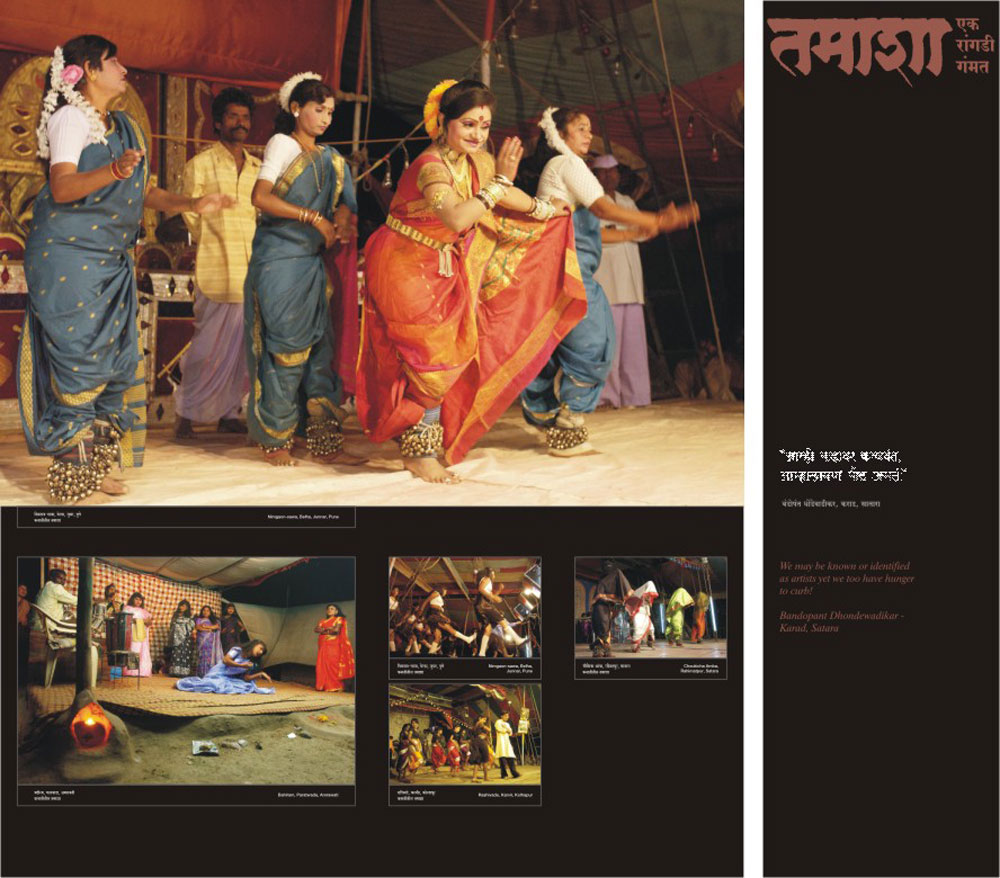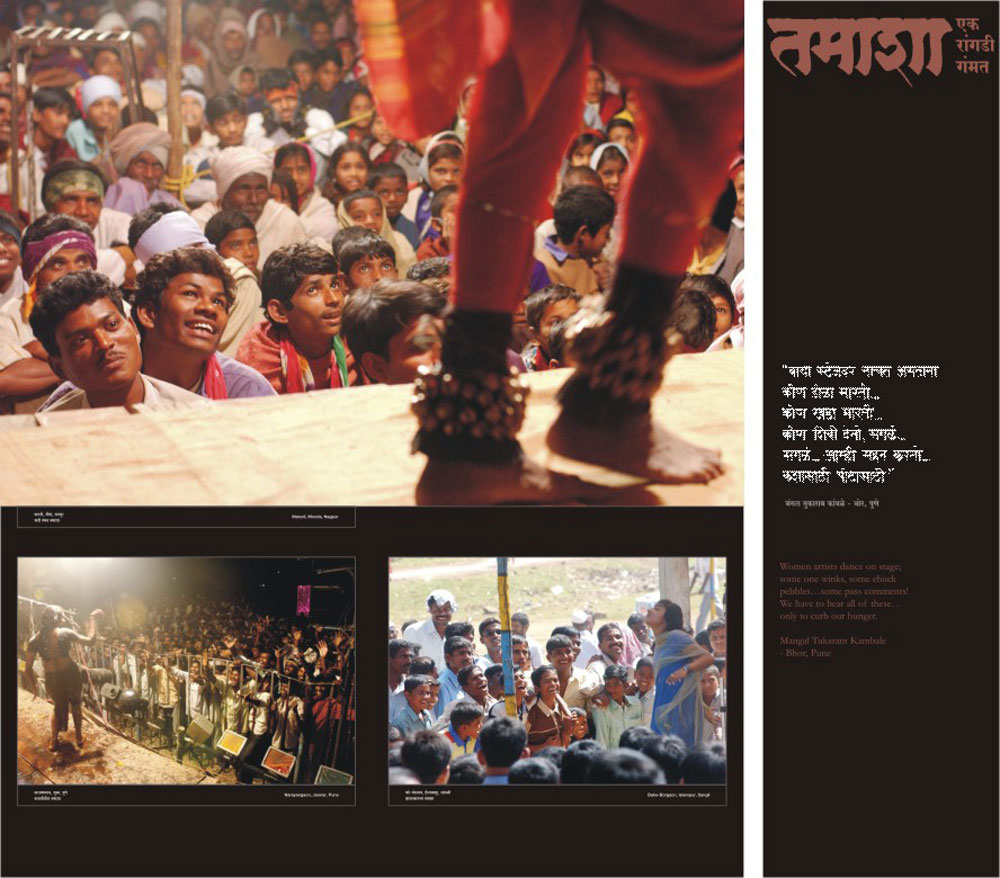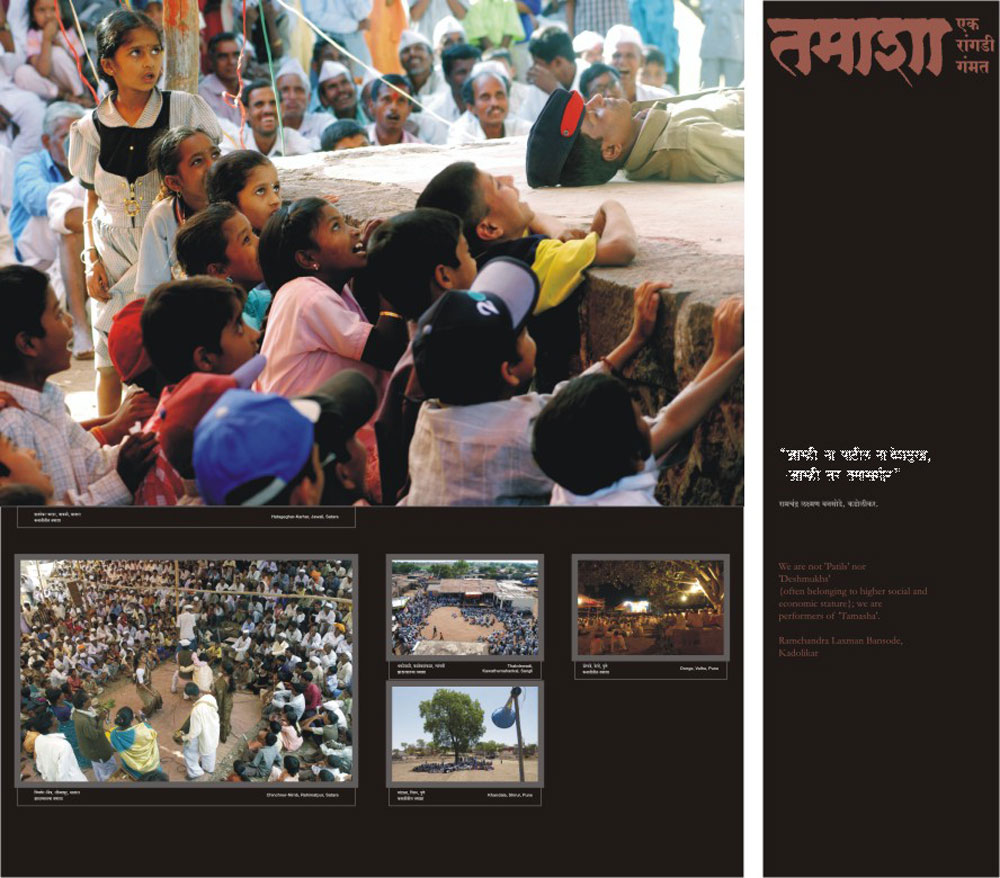Sandesh Bhandare




Grant Period: Over one year and six months
Arguably born three hundred years ago in the Deccan, Tamasha was originally a series of ‘entertainment items’ arranged for the Mughal and Peshwa armies. Performed primarily by women of the low-caste Kolhati and Dauri communities, this theatrical idiom uses an intoxicating mix of alluring songs, seductive dance and abrasive satire held together by a topical, simple narrative.
It has also served as an instrument of reform and more recently, as an instrument for propaganda. For instance, the 19th century social reformer, Shahu Maharaj commissioned poets to compose caustic povadas and lavanis that admonished Brahmins for their extravagant religious celebrations even when poor farmers were coming to terms with a wretched drought. And The Satya Shodhak Samaj used the Tamasha to spread the message of caste equality.
Sandesh accompanied the Tamasha troupes on tour and documented their performances in religious yatras and fairs in the various districts of the Konkan, Marathwada and Vidarbha. He created over 7,000 still photographs that have strived to go beyond a mere ethnographic record of their performance form.
His photo-feature on the Tamasha opened at the Piramal Art gallery, Mumbai in December 2003. Since then, this exhibition has traveled across Maharashtra and has also been seen in Panaji and Kolkata.
